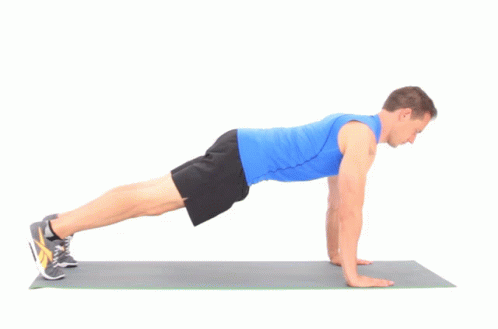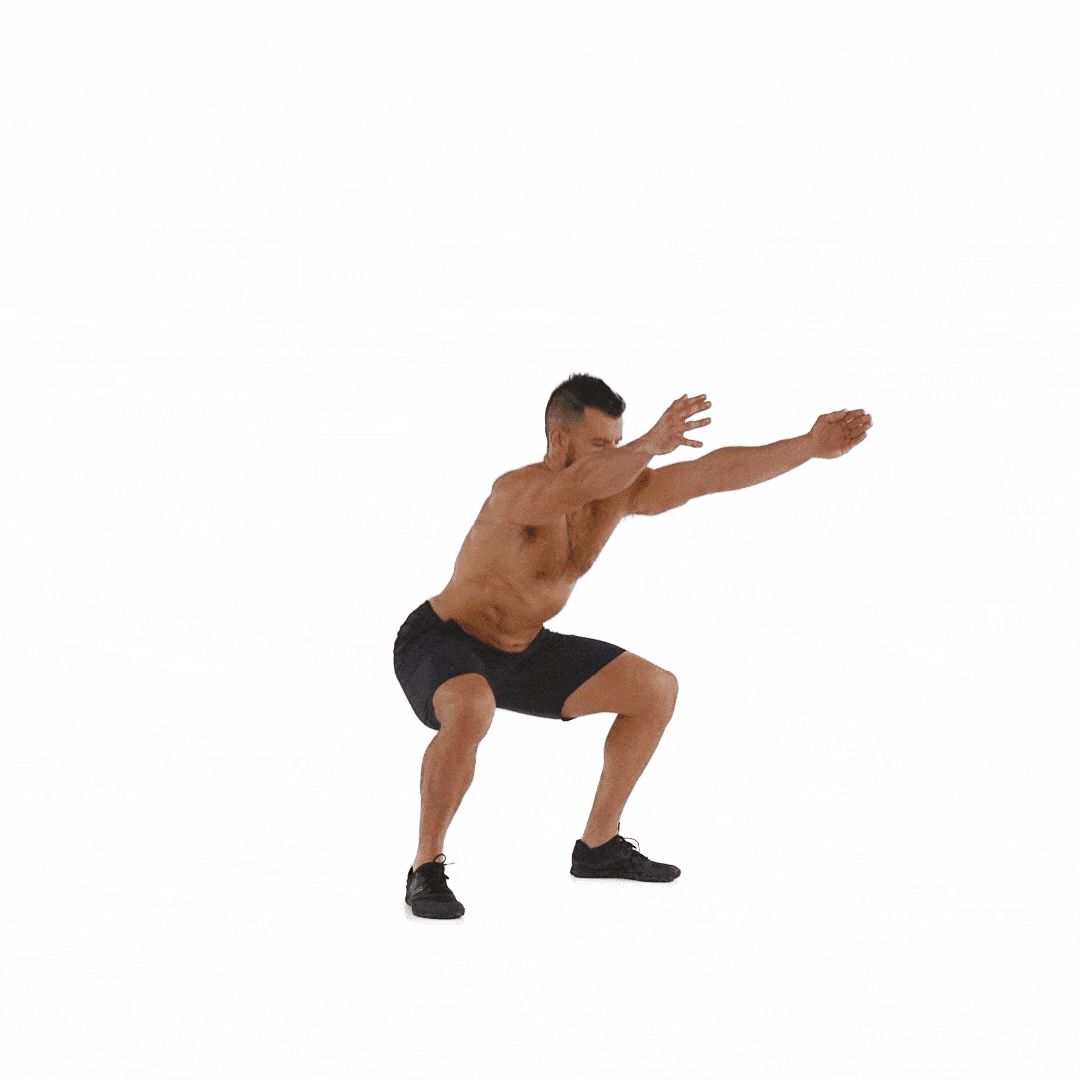Comprehensive Guide to Calisthenics: Building Strength and Flexibility
Introduction
Welcome to our comprehensive guide to calisthenics, a form of exercise that uses bodyweight movements to build strength, flexibility, and endurance. In this article, we will delve into the world of calisthenics, exploring its benefits, techniques, and how it can be an effective way to achieve your fitness goals. Whether you're a beginner or an experienced fitness enthusiast, calisthenics offers a versatile and challenging workout that can be tailored to suit your individual needs.
What is Calisthenics?
Calisthenics, also known as bodyweight training, is a form of exercise that relies on the resistance of your body to build muscle and improve overall fitness. It doesn't require any specialized equipment, making it a cost-effective and accessible workout option. Instead of using weights, you'll use movements that leverage your body's weight to engage various muscle groups.
The Benefits of Calisthenics
Calisthenics offers a plethora of benefits that contribute to overall physical and mental well-being. Some of the key advantages include:
1. Full-Body Strength Development
Calisthenics engages multiple muscle groups simultaneously, leading to balanced and functional strength development. Unlike isolated exercises that target specific muscles, calisthenics promotes overall body strength, helping you perform everyday activities more efficiently.
2. Improved Flexibility and Mobility
Many calisthenics exercises involve dynamic movements, which contribute to enhanced flexibility and mobility. Over time, your joints and muscles become more flexible, reducing the risk of injuries and improving your range of motion.
3. Core Stability and Balance
Core strength is a fundamental aspect of calisthenics. As you perform various bodyweight exercises, your core muscles are engaged to stabilize your body, leading to better balance and coordination.
4. Increased Endurance
Calisthenics workouts are often performed in circuits or with minimal rest between exercises, boosting your cardiovascular endurance. This endurance improvement translates into increased stamina for various physical activities.
5. Scalability and Adaptability
One of the greatest advantages of calisthenics is its scalability. Whether you're a beginner or an advanced athlete, calisthenics exercises can be modified to match your current fitness level, allowing for continuous progress and preventing plateaus.
Getting Started with Calisthenics
1. Warm-Up Routine
Before diving into your calisthenics workout, it's essential to warm up your body to prevent injuries and optimize performance. A dynamic warm-up that includes exercises like arm circles, leg swings, and hip rotations will prepare your muscles for the upcoming activity.
2. Basic Calisthenics Exercises
a. Push-Ups
Push-ups are a classic calisthenics exercise that targets the chest, triceps, and shoulders. To perform a push-up:
b. Bodyweight Squats
Bodyweight squats are effective for strengthening the quadriceps, hamstrings, and glutes. To perform a bodyweight squat:
c. Pull-Ups
Pull-ups target the back, biceps, and shoulders. If you don't have access to a pull-up bar, you can use a sturdy horizontal bar or even a tree branch. To perform a pull-up:
3. Progression and Advanced Moves
As you become more proficient in basic calisthenics exercises, you can progress to more challenging movements like:
Handstand Push-Ups: Target the shoulders and triceps, requiring a stable handstand position against a wall or freestanding.
Muscle-Ups: An advanced move that combines a pull-up with a dip, engaging multiple muscle groups.
4. Creating a Calisthenics Workout Routine
Designing an effective calisthenics workout routine involves balancing different exercises to target various muscle groups. Here's a sample routine to get you started:
Monday: Upper Body Focus
Push-Ups: 3 sets of 10 reps
Pull-Ups: 3 sets of 8 reps
Dips: 3 sets of 8 reps
Wednesday: Lower Body Focus
Bodyweight Squats: 3 sets of 12 reps
lunges: 3 sets of 10 reps per leg
Glute Bridges: 3 sets of 12 reps
Friday: Full-Body Circuit
Handstand Push-Ups: 3 sets of 6 reps
Muscle-Ups: 3 sets of 4 reps
Burpees: 3 sets of 10 reps
Remember to rest for a day between workout sessions to allow your muscles to recover and grow.
The Role of Nutrition in Calisthenics
While calisthenics plays a vital role in sculpting your physique, proper nutrition is equally important to support your fitness journey. Here are some nutrition tips to complement your calisthenics training:
1. Adequate Protein Intake
Protein is essential for muscle repair and growth. Make sure to include lean sources of protein in your diet, such as chicken, fish, tofu, eggs, and legumes.
2. Complex Carbohydrates
Carbohydrates provide the energy needed for intense calisthenics workouts. Opt for complex carbs like whole grains, sweet potatoes, and brown rice.
3. Healthy Fats
Don't shy away from healthy fats found in avocados, nuts, and olive oil. They support hormone production and aid in nutrient absorption.
4. Hydration
Staying hydrated is crucial for optimal performance. Drink plenty of water throughout the day and consider adding electrolytes during intense workouts.
Common Mistakes to Avoid
Even the best intentions can lead to mistakes in calisthenics training. Here are some common pitfalls to avoid:
1. Overtraining
Calisthenics can be addictive, but overtraining can lead to burnout and injuries. Listen to your body and allow adequate rest between workouts.
2. Poor Form
Performing exercises with improper form not only reduces their effectiveness but also increases the risk of injury. Focus on maintaining proper form throughout each movement.
3. Neglecting Recovery
Muscles grow and strengthen during rest. Neglecting recovery can hinder your progress. Prioritize sleep and incorporate active recovery days into your routine.
The Mind-Body Connection
Calisthenics is not just about physical fitness; it also fosters a strong mind-body connection. As you focus on each movement and control your body, you develop mindfulness and mental clarity. This connection allows you to be present at the moment, enhancing your overall well-being.
Tips for Progression
Calisthenics is a journey of continuous improvement. Here are some tips to progress and challenge yourself further:
1. Increase Repetitions
Gradually increase the number of repetitions you perform for each exercise. This will push your muscles to adapt and grow stronger.
2. Implementation Variations
Explore different variations of calisthenics exercises. For example, try wide-grip pull-ups or diamond push-ups to engage different muscle groups.
3. Introduce Weighted calisthenics
Once you've mastered bodyweight movements, you can add weight to your exercises using a weighted vest or resistance bands.
4. Master Advanced Moves
Work towards mastering advanced calisthenics movements like the planche, front lever, or human flag. These challenging moves will take your strength and skills to new heights.
The Calisthenics Community
Calisthenics has a thriving community of fitness enthusiasts who support and motivate each other. Join online forums, social media groups, or local calisthenics meetups to connect with like-minded individuals. Sharing your progress and learning from others can be a valuable source of inspiration and knowledge.
Conclusion
Calisthenics is an incredible form of exercise that can help you achieve remarkable strength, flexibility, and endurance. By following the comprehensive guide and incorporating a well-structured workout routine, you'll be well on your way to mastering calisthenics and improving your overall fitness level. Embrace the challenge, stay consistent, and witness the transformative power of bodyweight training in your fitness journey.
Start your calisthenics journey today and unlock a world of possibilities for your health and well-being! Remember, your body is your own gym, and with dedication and perseverance, you can achieve astounding results. Enjoy the journey, and let calisthenics be the path to a healthier, stronger, and more resilient you.




